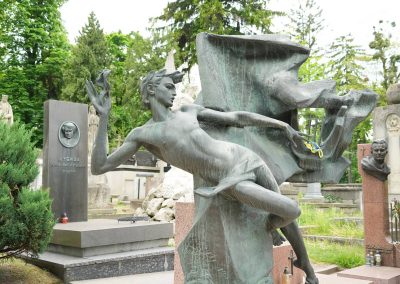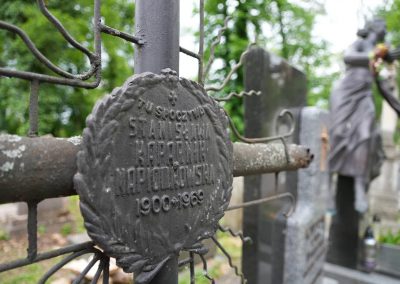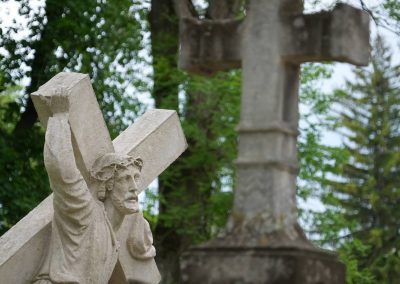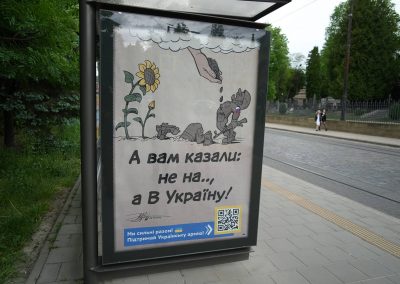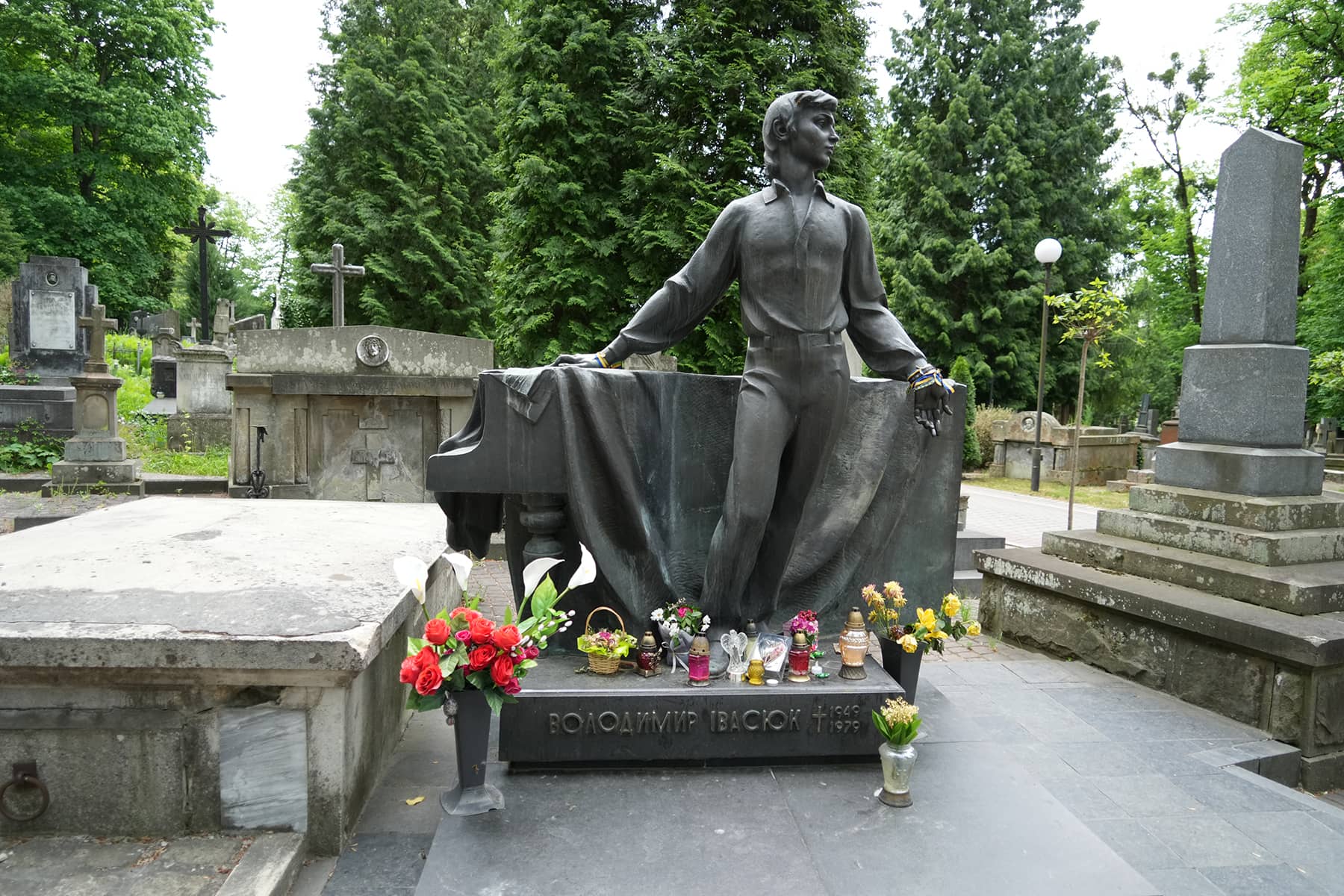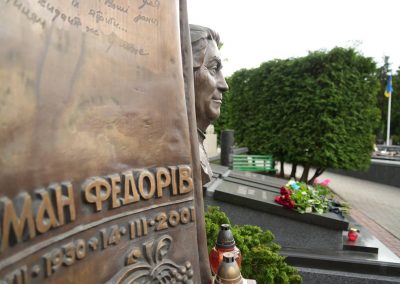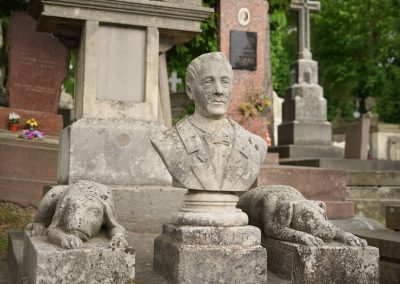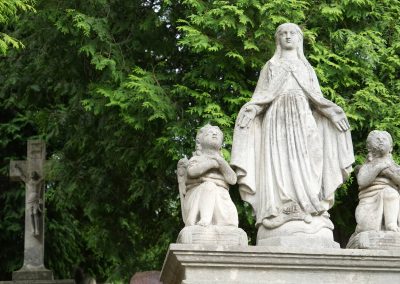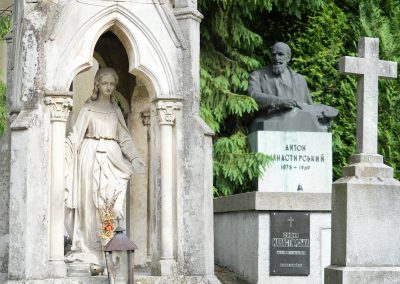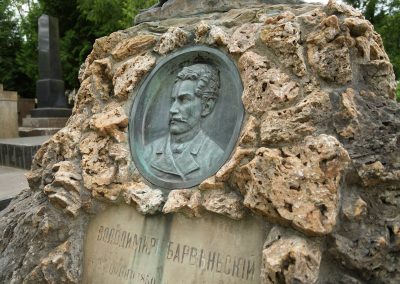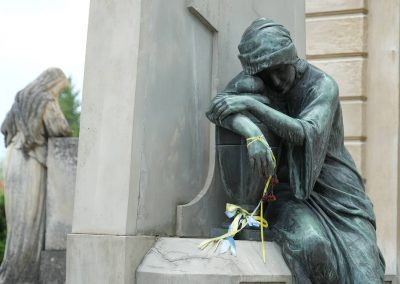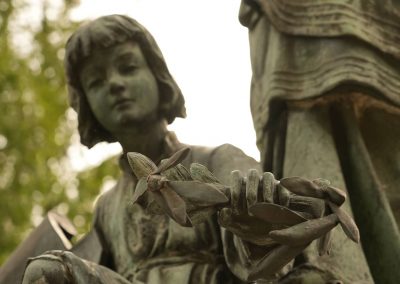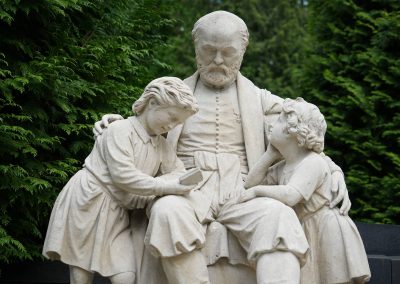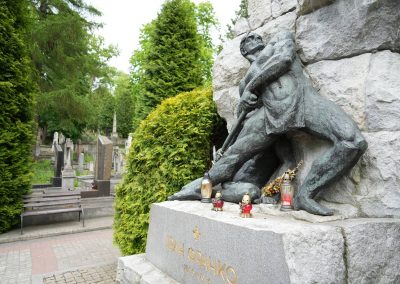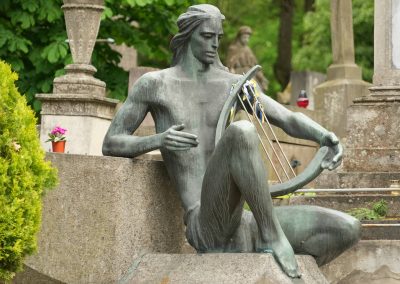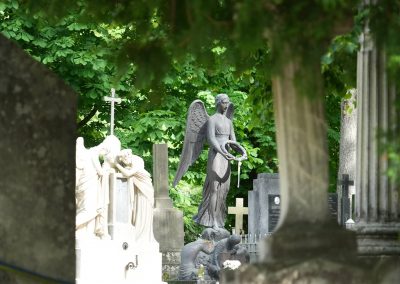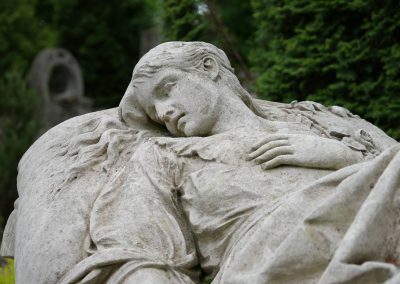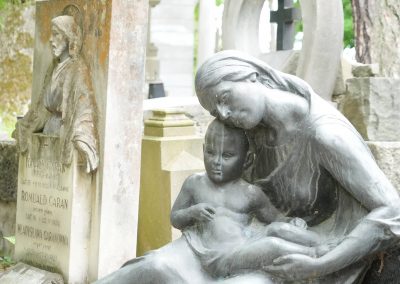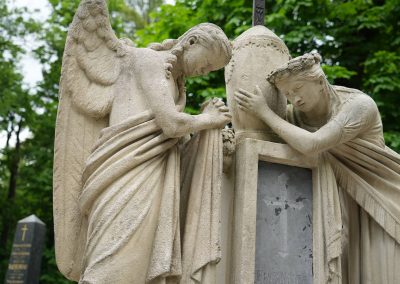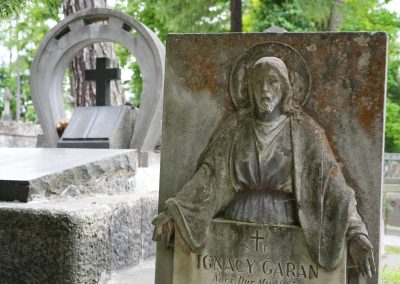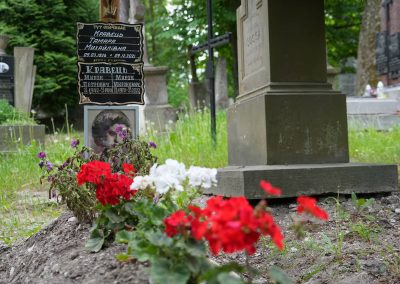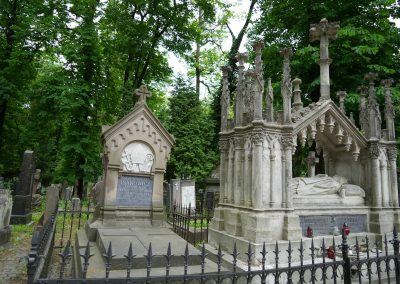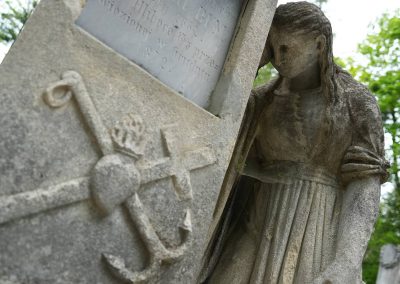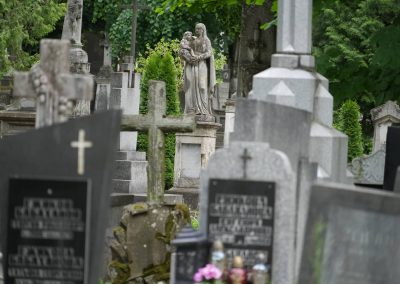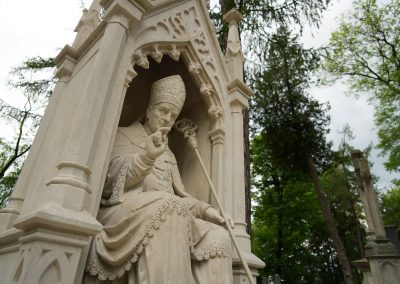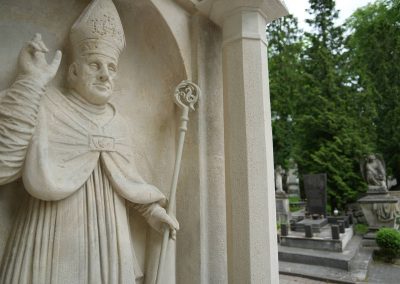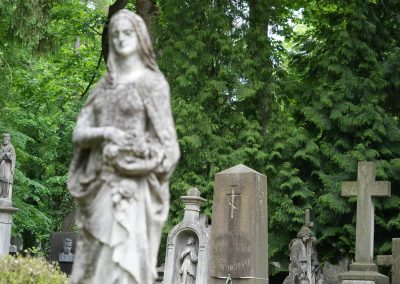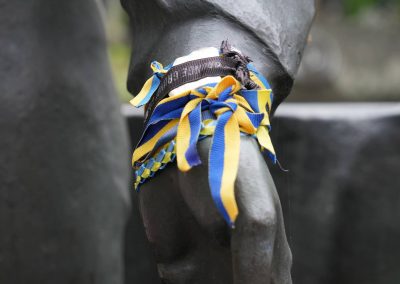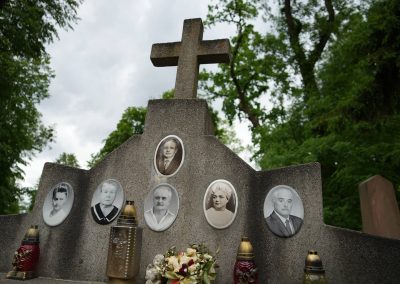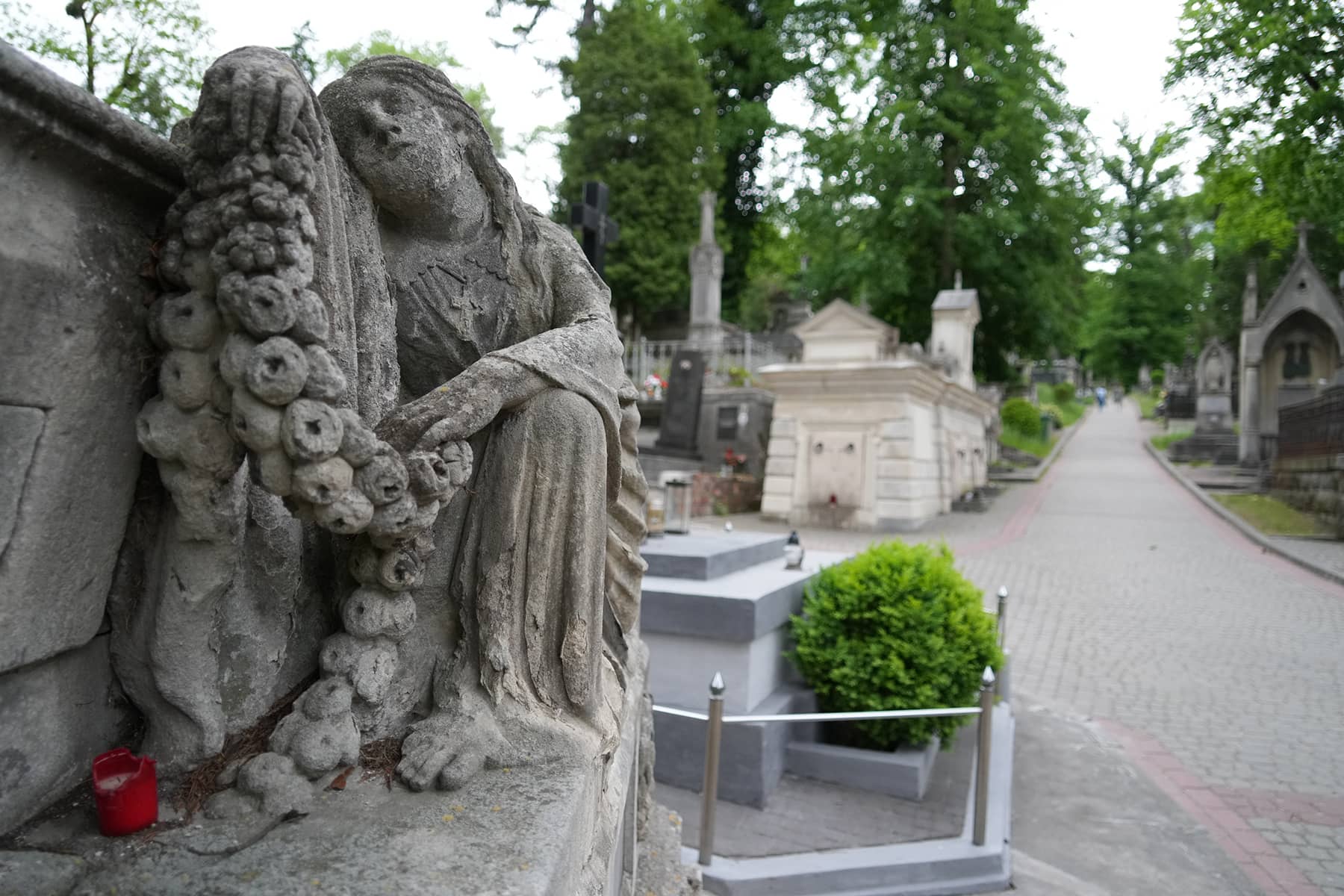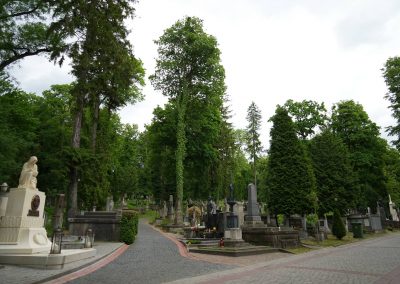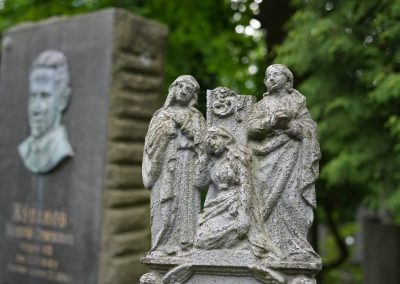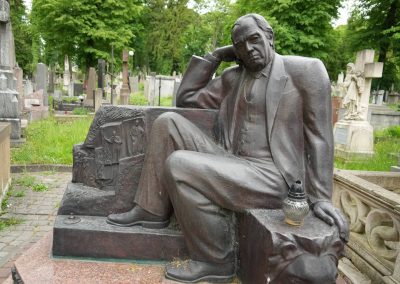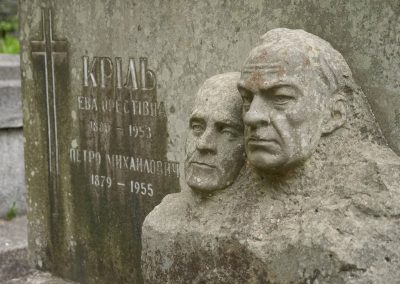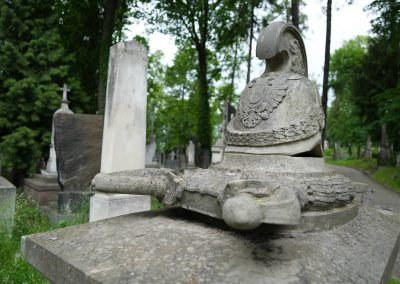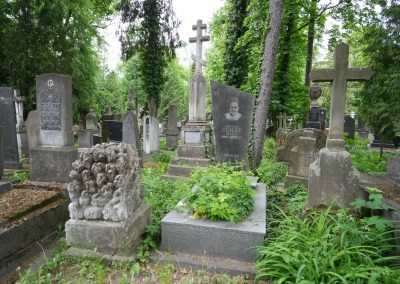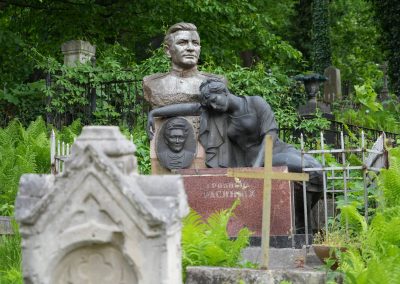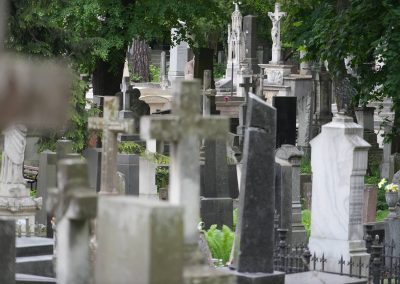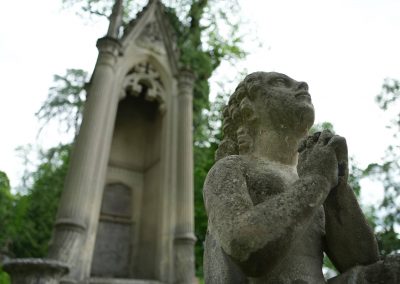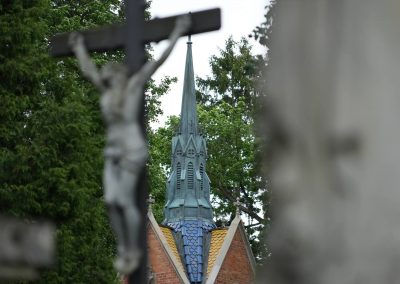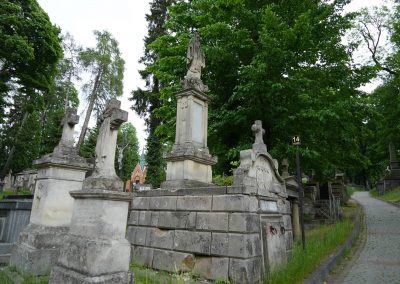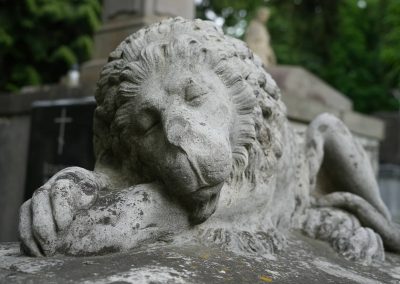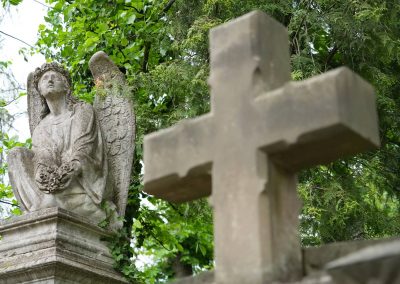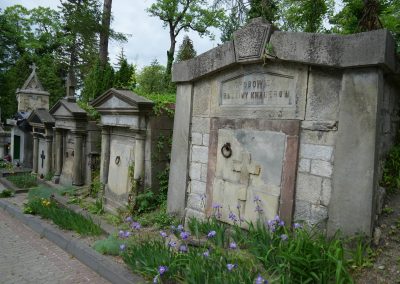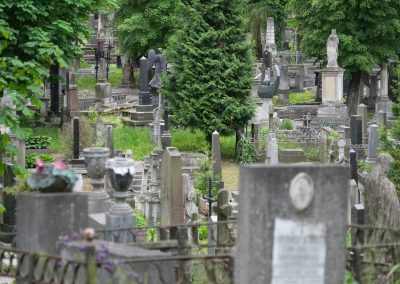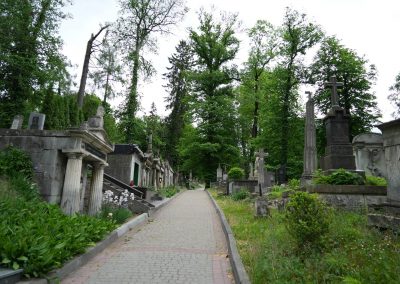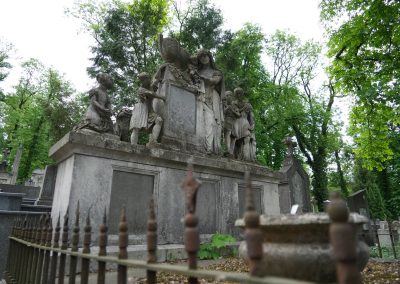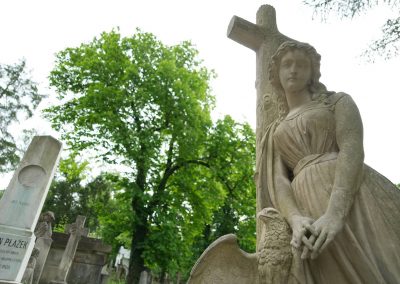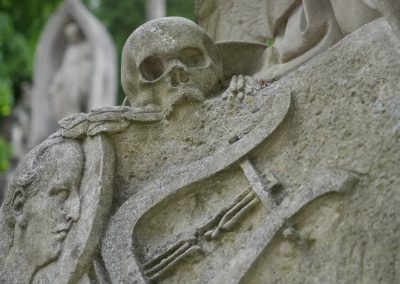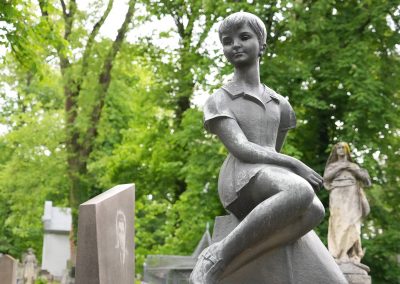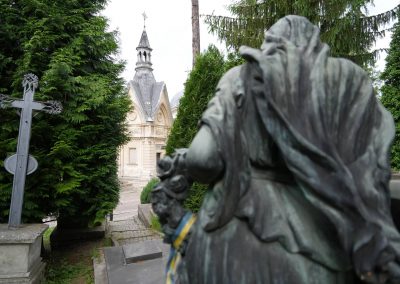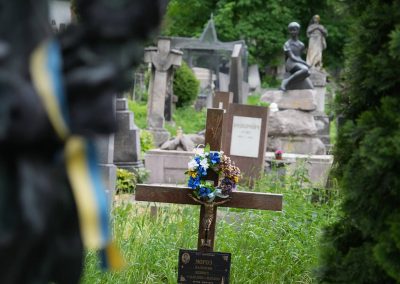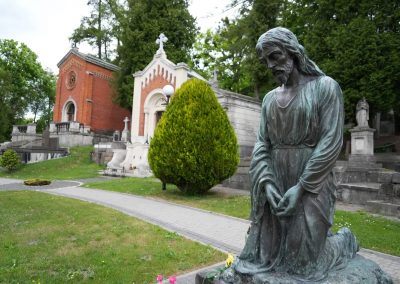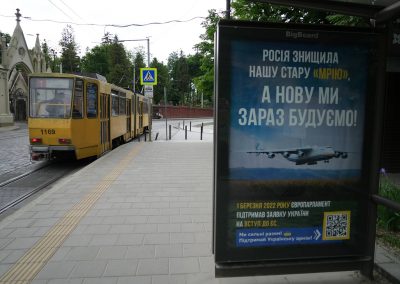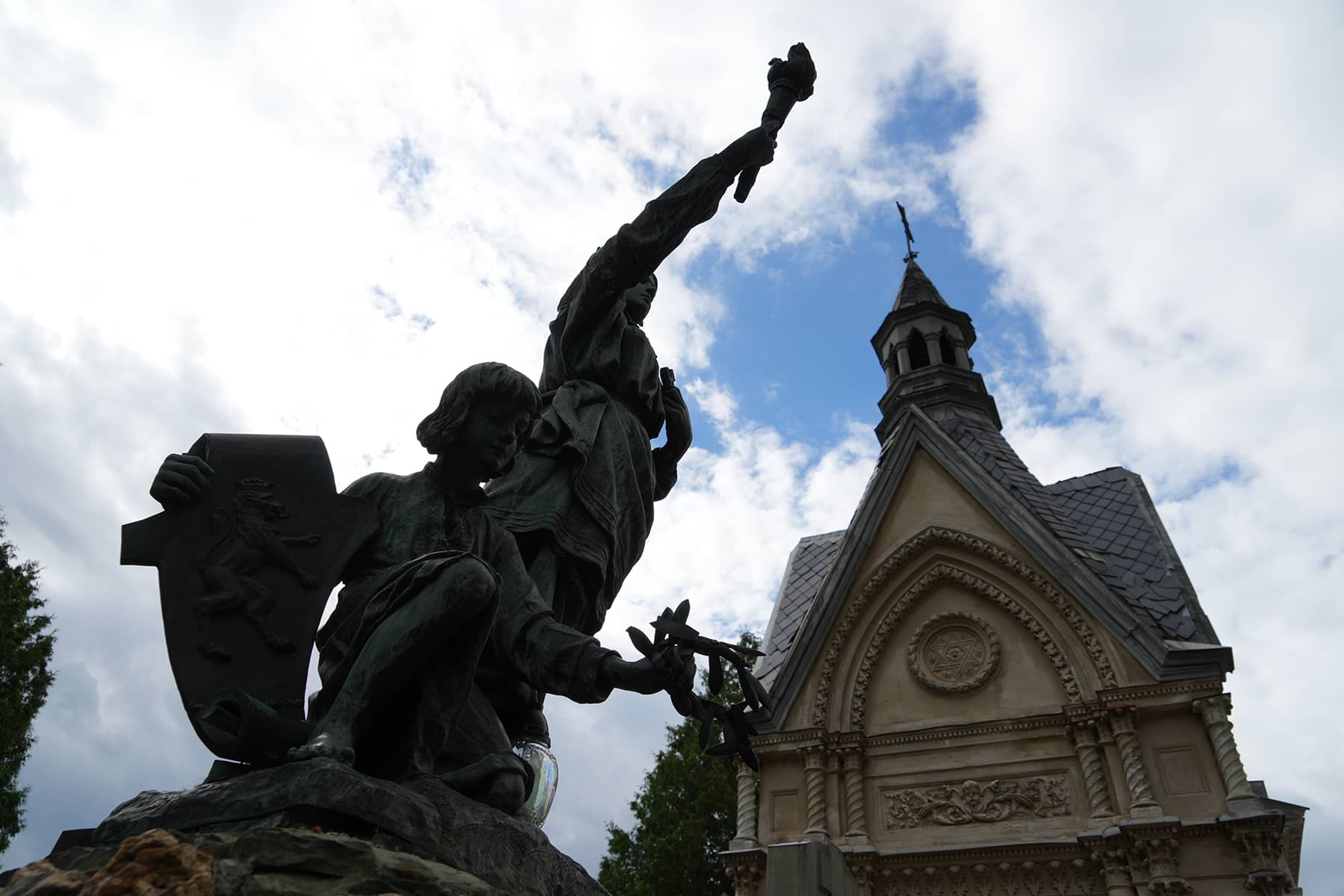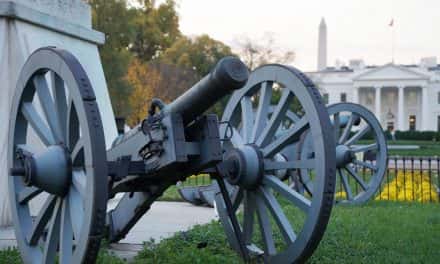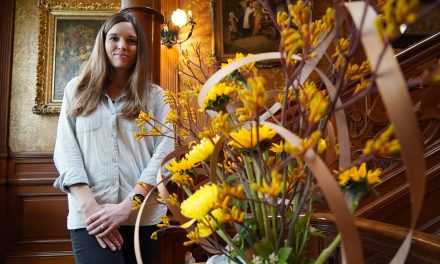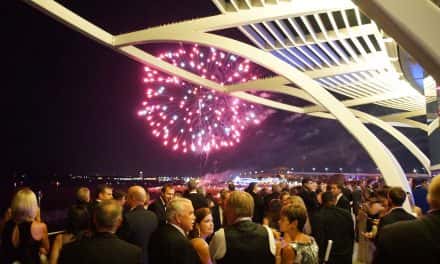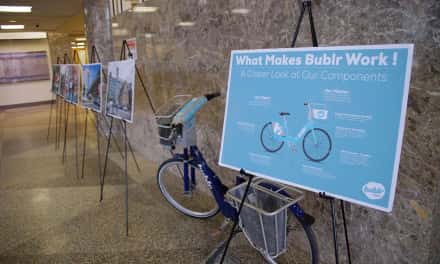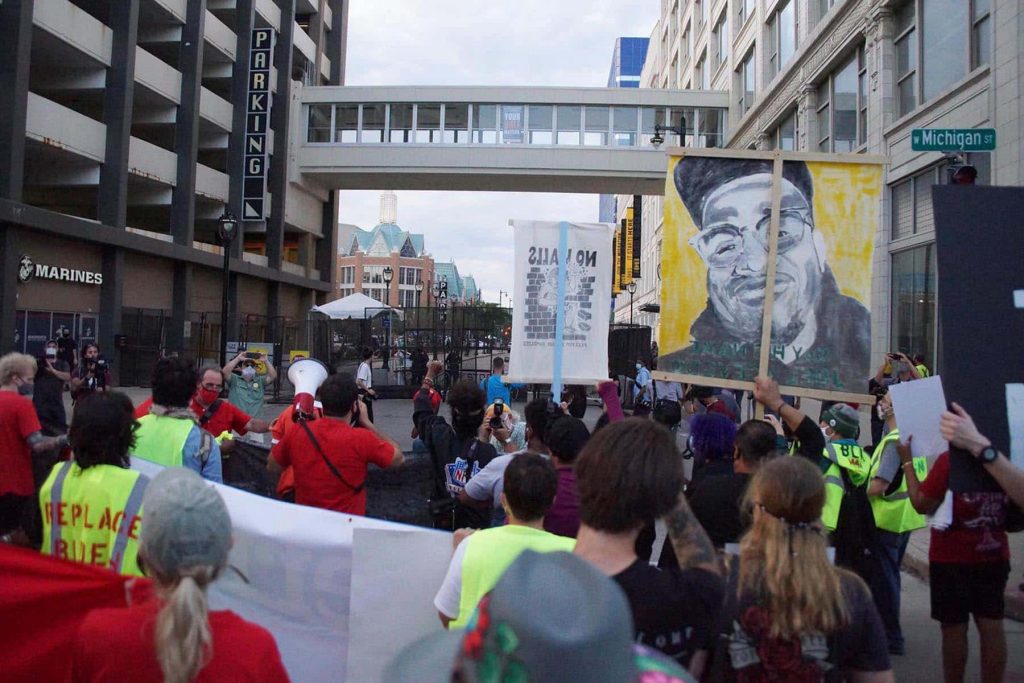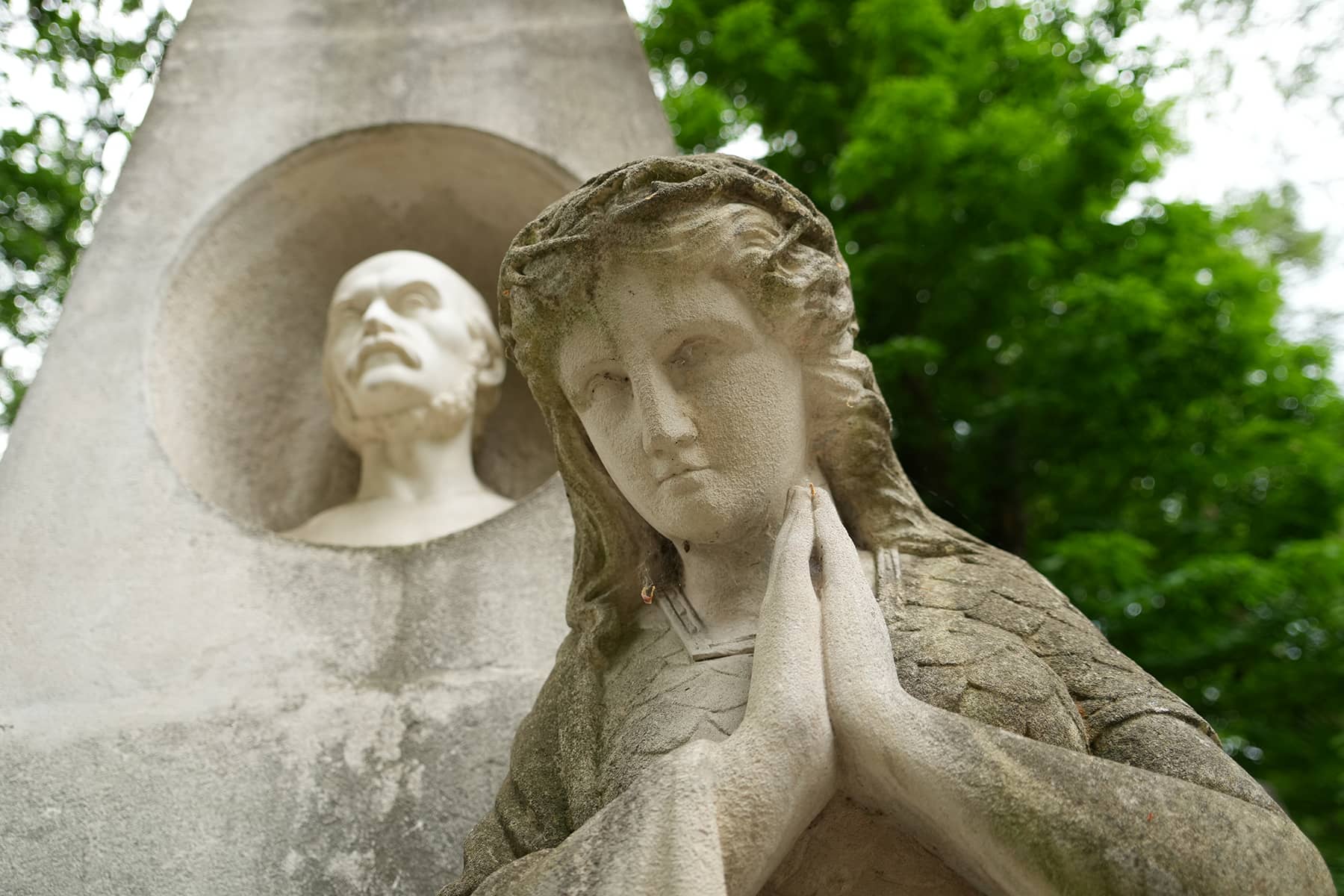
Because I did not attend high school in Milwaukee, when I returned after college I was often made to feel like an outsider. But to quote what local historian John Gurda told me, “if you have family buried at Forest Home Cemetery, you are a Milwaukee native.”
Generations of my family are buried at Forest Home Cemetery, and I am a member of the church that founded it 172 years ago. I am not fascinated by cemeteries as much as I am bewildered why people are afraid of them. We are no longer children watching Halloween movies.
But perhaps my interest has a lot to do with how I grew up. There were many Civil War battlefields around where I lived in Georgia. And I would spend summers with my Grandfather who came down from Milwaukee to do research across the Old South.
To me, cemeteries were where heroes were buried, even though in the South no one could admit that they were traitors. But it was also where history could be found. Perhaps it was an abstract concept, but I saw the craftsmanship of the headstones, monuments, mausoleums, memorial markers, and just marveled over the era in which they were constructed.
In their death, I was eager to understand what their life was like.
Forest Home Cemetery was Milwaukee’s first park, where people would travel from the city to picnic. Even now, in the heart of the city that has enveloped it, the almost 200 acres is a tranquil space.
I have written before about living near Bonaventure Cemetery in Savannah, and why I see cemeteries as places that encapsulates history. At Forest Home, the story of Milwaukee is found every few feet. From city founders, to Beer Barons, to everyone a local street has been named after can be found there.
So naturally, when I heard about Lviv’s historic cemetery I was interested to visit it. The density and artistry of the grounds was beyond description. Where as in Milwauke, we can maybe distinguish nationalities by the last name on headstones, in Lviv it was by language.
Lychakiv Cemetery, officially known as the State History and Culture Museum-Preserve “Lychakiv Cemetery,” was created in 1787. It served as the necropolis of Lviv’s leadership under Austro-Hungarian, Polish, and Soviet rulers. Which is why a mix of Latin and Cyrillic letters are found carved in stone across the grounds.
At Forest Home I learned a lot about how cemeteries evolved over decades, from grand family plots and shifts in population demographics. At Lychakiv Cemetery, the styles felt like “Everything Everywhere All at Once.”
It was late in the day when I visited, and already exhausted from the pace of my whirlwind schedule that never seemed to end. But I enjoyed visiting the place, and found the same sense of tranquilly that I guess is a signature of most cemeteries.
Lychakiv Cemetery had new graves of war dead from fighting the Russians in recent weeks, beside soldiers from past decades and long ago wars. Of the many famous people interred, one individual of note was pointed out to me.
Composer Volodymyr Ivasyuk (March 24, 1949 – April 27, 1979) was a Ukrainian songwriter, poet, and national hero. He was the author and composer of the popular song “Chervona Ruta,” which is particularly cherished by the Ukrainian diaspora.
He was also an inspiration for a generation, which made him a threat to the Soviet rulers. It was why he was mysteriously killed, along with anyone who sought to learn the truth about his death.
His story reminded me of the importance and power of the performing arts, and why it such expressions of culture, identity, and creative thought are a threat to autocrats who can only rule with an iron fist.
The experience also illustrated how I travelled all the way from Milwaukee to a cemetery in Lviv to get history lesson. I stood there as an unexpected witness. Ivasyuk dared to shine his light in a Soviet world that teetered between a perpetual gloom and an absolute darkness. In Milwaukee, America, and the world, we need more people with the courage to shine their light.
© PHOTO NOTE: All the original editorial images published here have been posted to the Facebook page of Milwaukee Independent. That collection of photos contains the MI copyright and watermark for attribution, and may be used for private social media sharing. Do not download and share images directly from this page. mkeind.com/facebook
Series: Reports from Ukraine
- Reports from Ukraine: Traveling from Milwaukee to a country at war just to take a vacation from America
- Images from Ukraine: Latino artist travels to Irpin to paint mural inspired by "Echoes of Guernica"
- Images from Ukraine: Irpin residents welcome reissue of Russian Warship Stamp as latest sign of victory
- Stories from Ukraine: Wandering in the ruins of a shattered life after surviving Russia's invasion
- Images from Ukraine: Similar to the Alamo, martyred cities bought precious time to save a nation
- Stories from Ukraine: Tent camp offers shelter for displaced residents until Irpin can rebuild lost homes
- Images from Ukraine: Graveyards of Russian war machines show the scale of Putin's failure to seize Kyiv
- Images from Ukraine: Following the invasion convoy's 40-mile route and exploring an abandoned base
- Stories from Ukraine: Illegal weapons and proof of Russian War Crimes easily seen along streets of Irpin
- Images from Ukraine: How Irpin’s cemetery processed the staggering massacre of its local citizens
- Stories from Ukraine: Healing remains slow as Borodyanka residents recover from occupation
- Images from Ukraine: The deep scars of war remain visibly etched across the landscape of Borodyanka
- Interview with Oleksandr Markushin: Mayor of Irpin and the hero of a Hero City
- A Meeting of Sister Cities: Former and current Mayors of Irpin ask Milwaukee's business community for help
- Stories from Ukraine: Having a shared purpose helped Irpin's leaders protect the city and stop the invaders
- Stories from Ukraine: How Milwaukee helped a bakery feed hungry survivors in Bucha with fresh bread
- Stories from Ukraine: Bucha resident recalls how Russians turned neighborhood into a street of death
- Stories from Ukraine: How a mass grave of executions overshadowed accountability from Bucha’s leadership
- Images from Ukraine: Putin’s attack on Babyn Yar is a painful reminder of the broken vow of “Never Again”
- Images from Ukraine: An unexpected encounter with Jewish history and the bloody legacy of persecution
- Images from Ukraine: Listening to timeless voices of ethnic heritage etched in stone at Lychakiv Cemetery
- Images from Ukraine: The experience of attending a military funeral in Kyiv while children died in Uvalde
- Images from Ukraine: Stepping out of the fog of war to see the beauty of faith in ancient places of worship
- Images from Ukraine: The cities of Kyiv and Lviv were divided by history but remain united in identity
- Stories from Ukraine: Anya Nakonechna shares why the Lviv Opera is a symbol of her nation’s culture
- Images from Ukraine: A folk village where visitors can experience the life of past generations
- Images from Ukraine: Signs of renewal sprout from under Irpin’s rubble as city looks to the future
Lее Mаtz
Lее Mаtz
Lее Mаtz and Yaroslav Zdyrko
Milwaukee Independent editorial team for this special series: (UKRAINE) Lee Matz, photojournalist; Oleh Pinta, translator / reporter; Yaroslav Zdyrko, security / videographer; (MILWAUKEE) Halyna Salapata, logistics / translations.
Milwaukee Independent has reported on the situation in Ukraine since it was invaded on February 24. Coverage originally began with reactions and rallies from the local Ukrainian American community, and relationships with Milwaukee’s sister city of Irpin. Through partnerships and good journalism, sources were developed that enabled Milwaukee Independent to publish developments about the unprovoked war in realtime. In late May, a team from Milwaukee Independent spent nearly two weeks on the ground in Ukraine. The award-winning daily news magazine was the first and, at the time, only media organization to send staff into the country since the war began.
Reports from Ukraine: An extensive news series by Milwaukee Independent from a country at war

